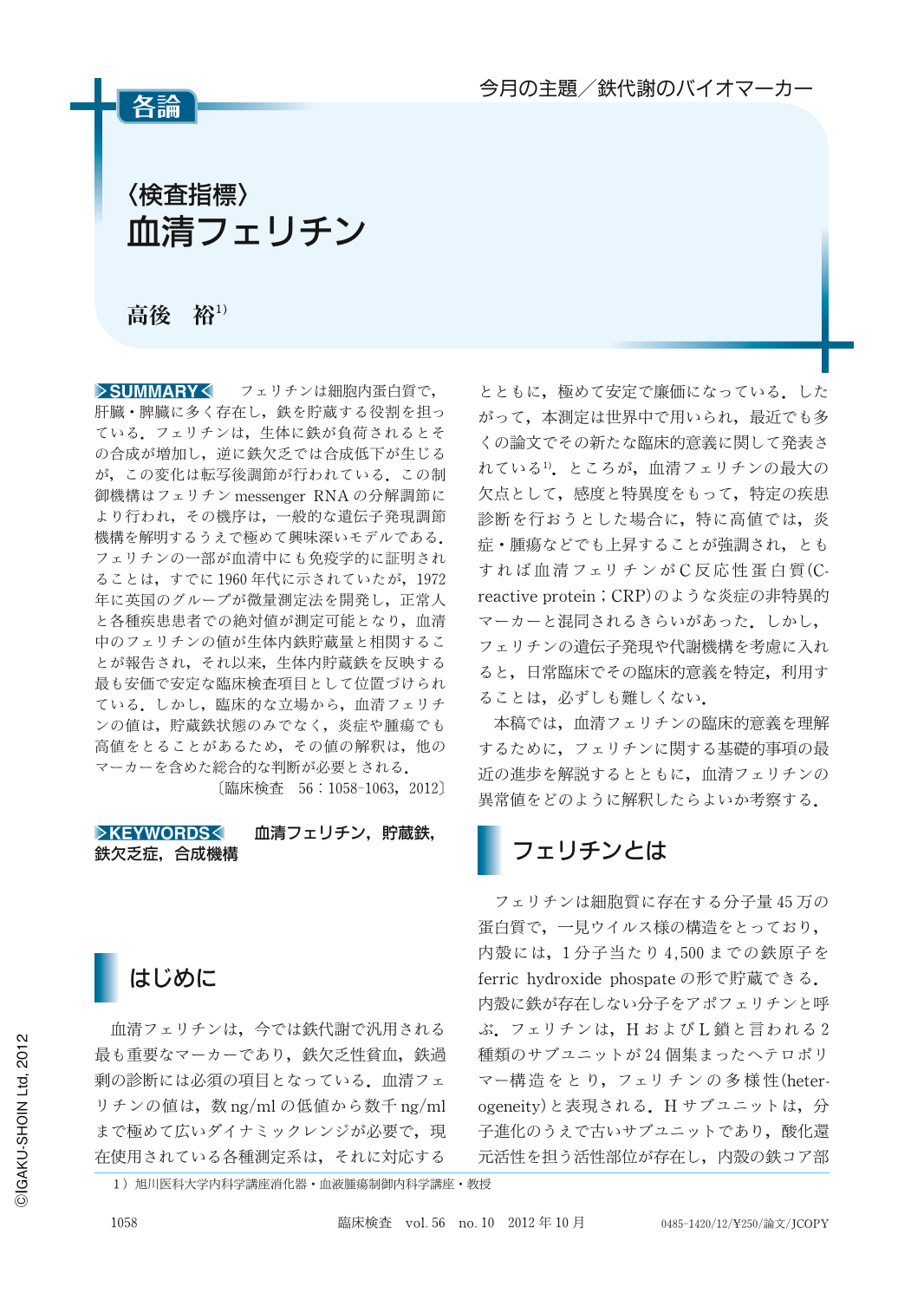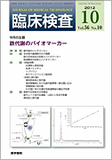Japanese
English
- 有料閲覧
- Abstract 文献概要
- 1ページ目 Look Inside
- 参考文献 Reference
フェリチンは細胞内蛋白質で,肝臓・脾臓に多く存在し,鉄を貯蔵する役割を担っている.フェリチンは,生体に鉄が負荷されるとその合成が増加し,逆に鉄欠乏では合成低下が生じるが,この変化は転写後調節が行われている.この制御機構はフェリチンmessenger RNAの分解調節により行われ,その機序は,一般的な遺伝子発現調節機構を解明するうえで極めて興味深いモデルである.フェリチンの一部が血清中にも免疫学的に証明されることは,すでに1960年代に示されていたが,1972年に英国のグループが微量測定法を開発し,正常人と各種疾患患者での絶対値が測定可能となり,血清中のフェリチンの値が生体内鉄貯蔵量と相関することが報告され,それ以来,生体内貯蔵鉄を反映する最も安価で安定な臨床検査項目として位置づけられている.しかし,臨床的な立場から,血清フェリチンの値は,貯蔵鉄状態のみでなく,炎症や腫瘍でも高値をとることがあるため,その値の解釈は,他のマーカーを含めた総合的な判断が必要とされる.
Ferritin is an iron storage protein which is mainly localized in the liver and spleen. Ferritin synthesis is increased when iron is loaded into the body, and vice versa, the regulation of which is mediated at the post-transcriptional level. It is noteworthy that a small portion is released into the serum, and is measurable as "serum ferritin". Up to now, the measurement of serum ferritin has been considered to be the most convenient and reliable marker to estimate the degree of storage of body iron, even though the increase might be observed in the presence of inflammation. The interpretation of the meaning and value of serum ferritin in each patient should be carefully conducted by considering these biochemical and clinical backgrounds of serum ferritin.

Copyright © 2012, Igaku-Shoin Ltd. All rights reserved.


